
Futurism
Welcome to the future. Award-winning reporting on breathtaking scientific discoveries, wild tech innovations, and more.
Recent Posts
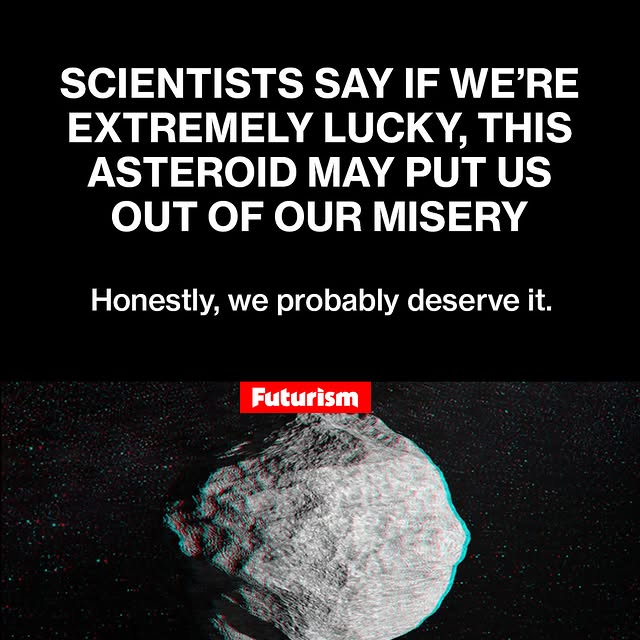
Astronomers have spotted a 200-foot-long space rock likely to nearly miss Earth in about eight years — but there's a statistically significant chance it could slam right into us. University of Arizona researcher David Rankin wrote that there are "slightly increased" 1-in-83 odds of the rock, dubbed 2024 YR4, making impact on Dec. 22, 2032. He added: "This is one of the highest probabilities of an impact from a significantly sized rock ever." If it were to collide with our planet, it wouldn't threaten the entire thing, though it could easily wipe out an entire city. An asteroid roughly similar in size impacted a remote region of Siberia in 1908, obliterating 800 square miles of forest. Still, 2024 YT4 is the second-highest rated asteroid ever on the Torino Impact Hazard scale, behind only the 1300-foot-across Apophis, which was given a record mark of four early this century before being downgraded. It's possible YT4 could later receive a similar downgrade. Read more about these latest findings at the link in our bio.

The Cybertruck has taken another L, and this one is to a car from, let’s say, another era. A head-to-head race at a Colorado track pitted the distinctive Tesla against a 1996 Chevrolet Corvette Grand Sport, and the Corvette snuck up the inside late to take a surprise win. The Cybertruck had a big lead early, and its large size was a disadvantage as the race progressed. But it’s another example of the truck falling short of Tesla’s bombastic proclamations. Read about more at the link in our bio. 📽️: @coloradospeedway

At the World Robot Conference in Beijing last week, animatronics company Ex-Robots showed off some astonishingly lifelike humanoid bots. The reason some of them so resembled humans is because, well, they were actually humans. The company trotted out the two cosplayers amid some actual animatronics. Though many were initially fooled, the bit was up when an image was posted online showing one human “robot” eating lunch. Read the full story at the link in our bio. 📽️: misunderstood_g3nius

Mark Zuckerberg spent time, energy, and dollars to transform his image from a robotic nerd to an ultra-cool millennial trendsetter, and the results are in: He's viewed even more unfavorably than before. A Pew Research Center survey conducted in recent weeks found that the Facebook founder is viewed unfavorably by 67 percent of Americans, with more than a quarter saying their opinion is "very unfavorable." A separate poll last year found that roughly 65 percent of people had a negative opinion of Zuckerberg. In other words, the self-designed t-shirts, glitzy gold chains, and other fashion ... statements have done exactly zilch to improve his popularity. One could perhaps forgive the 40-year-old Facebook founder were his new vibe merely aesthetic, but it seems to be a byproduct of a reactionary shift that isn't just limited to stupid comments about "masculine energy" on broey podcasts. He's also hard at work rebranding Meta as "anti-woke," and rolling back diversity guidelines in favor of "free speech" that allow for way more hateful content. He's even, by more than 10 percentage points per the Pew poll, more unpopular than fellow tech gazillionaire Elon Musk. See more at the link in our bio.
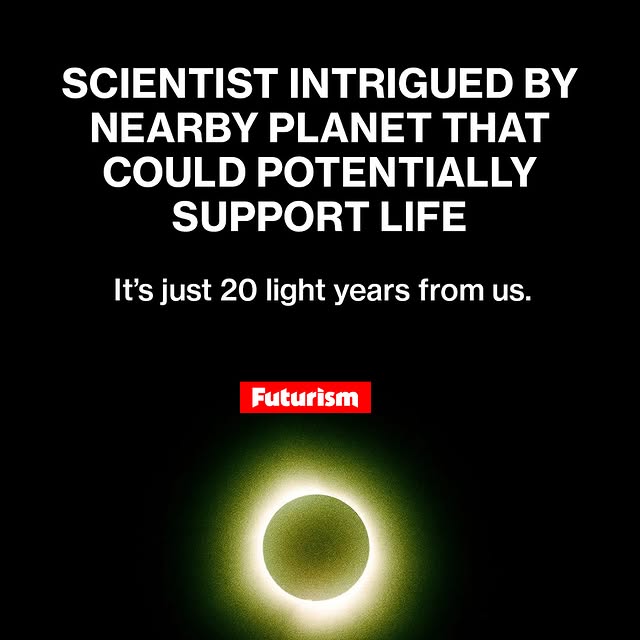
Astronomers have detected an exoplanet just 20 light years from Earth that's orbiting in the habitable zone of its star — where temperatures are just right to support liquid water on the surface. The planet, dubbed HD 20794 d, is suspected to be what's referred to as a super-Earth, possessing around six times the mass of our world, according to a new study. It's too early to say outright if it's capable of supporting life, but it certainly looks possible. "For me, it was naturally a huge joy when we could confirm the planet's existence," said study coauthor Michael Cretignier, an Oxford astrophysicist. Because HD 20794 d is so close to us, Cretignier added, there is "hope for future space missions to obtain an image of it." The planet's star, 82 G. Eridani, is a yellow dwarf like our Sun with about 80 percent of its mass. It's older than our Sun, however, and perhaps showing its age, is also a tad fainter. HD 20794 d, for its part, has an elliptical orbit, unlike our circular one, so the distance it keeps from its star changes dramatically as it revolves. That could subject it to dramatic temperature swings — but still, potentially, within the range that could support life. Read more about the planet at the link in our bio.

Behold the “Protoclone,” a robot that Clone Robotics calls the world’s first bipedal, musculoskeletal android. Alternatively known as one of the creepiest things we’ve ever seen, and something guaranteed to give you nightmares. See what the company behind the Protoclone is saying — and how the internet is responding — at the link in our bio. 📽️: @_cosmosos_ #robot #protoclone #creepy
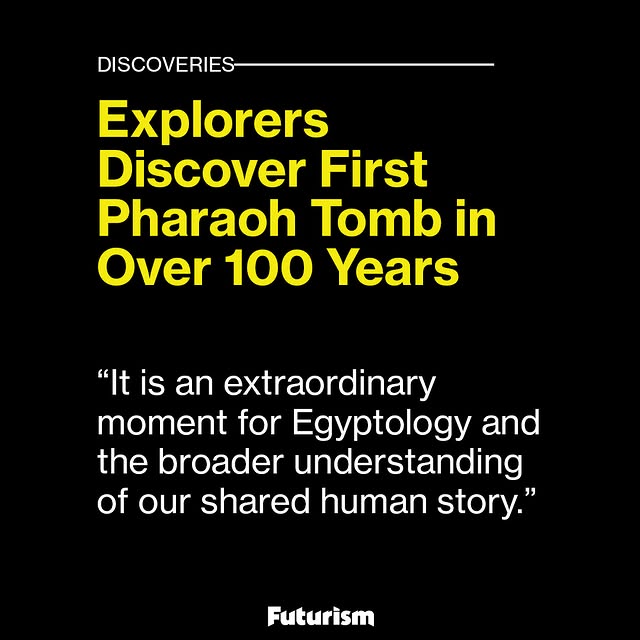
A team of researchers has discovered what it says is the first Egyptian pharaoh's tomb to be found in over a century. They found the tomb of King Thutmose II in the Western valleys of the Theban Necropolis, near Luxor, Egypt. "The emotion of getting into these things is just one of extraordinary bewilderment because when you come across something you're not expecting to find, it's emotionally extremely turbulent really," mission field director Piers Litherland told @bbcnews. "And when I came out, my wife was waiting outside and the only thing I could do was burst into tears." The tomb was the first to be found since that of King Tutankhamun, one of Thutmose's ancestors. Both kings lived during the 18th dynasty of Egypt, which spanned the period from 1549 to 1292 BC. The pharaoh's mummified remains were discovered two centuries ago, but the location of his tomb has remained unknown until now. To reach it, researchers had to descend stairs and a large corridor, where they discovered a "blue-painted ceiling with yellow stars on it" — a display "only found in kings' tombs," Litherland said. "It was only after crawling through a [32-foot] passageway that had a small [15-inch] gap at the top that we got into the burial chamber," he said. But then they found it empty. Go to the link in our bio to see how the Egyptologists traced back the site to Thutmose.
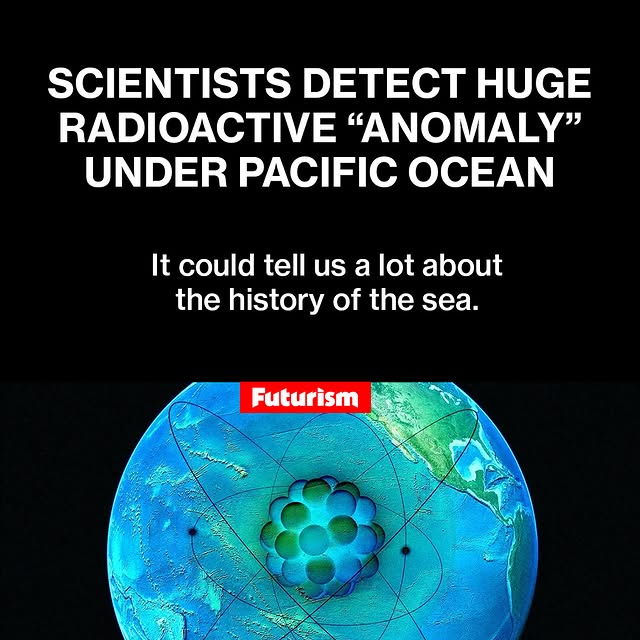
Researchers have discovered an "unexpected" accumulation of a radioactive isotope deep underneath the surface of the Pacific Ocean, a find that could serve as an "independent time marker for marine archives" and give us a better sense of how the planet's crust has evolved over millions of years. The "anomaly," as scientists described the stockpile of beryllium-10 in a new paper, purportedly dates back to shifts in ocean currents or cosmic rays interacting with the Earth's atmosphere approximately ten million years ago. Beryllium-10 is continuously produced by oxygen and nitrogen atoms in the Earth's upper atmosphere interacting with high-energy protons, which race through the universe at nearly the speed of light. Radioactive isotopes are typically used by researchers to date archaeological and geological samples, often via radiocarbon dating. But that process only works as far back as 50,000 years, said study co-author Dominik Koll, who added: "To date older samples, we need to use other isotopes, such as cosmogenic beryllium-10." And what did these scientists find? Beryllium-10. The isotope's half-life is a whopping 1.4 million years, and it breaks down into boron, allowing scientists to look much further back in time, over ten million years. "At around 10 million years, we found almost twice as much [boron-10 isotope] as we had anticipated," Koll said. "We had stumbled upon a previously undiscovered anomaly." The researchers have a few theories for why that might be—including one involving a powerful celestial event. Read more at the link in our bio.
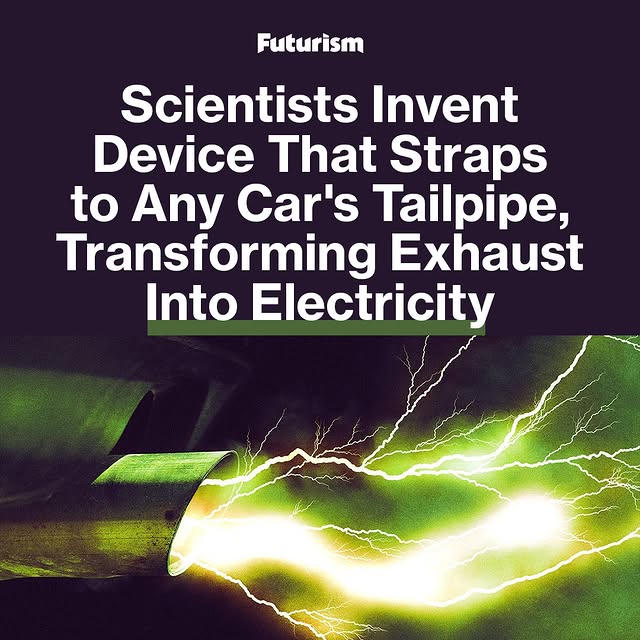
If we’re going to work our way out of this climate mess we’re in, we’re going to need a lot of brilliant, borderline crazy ideas to get there. Well, a team of researchers just came up with one. They say they’ve created a device that can turn exhaust heat into electricity — with a relatively simple design that can be added to an existing car’s tailpipe, or even the exhaust vents of other vehicles like helicopters. As detailed in a recent study, the prototype thermoelectric generator was able to produce a maximum power output of 40 Watts, which is enough to power a lightbulb — and that’s just in their limited experiments so far. When simulating high-speed environments, the researchers found that their thermoelectric system could produce up to 56 Watts of power when traveling at the speed of a car. And for helicopters, it was nearly thrice that: 146 Watts. Read more about this potential breakthrough at the link in our bio.
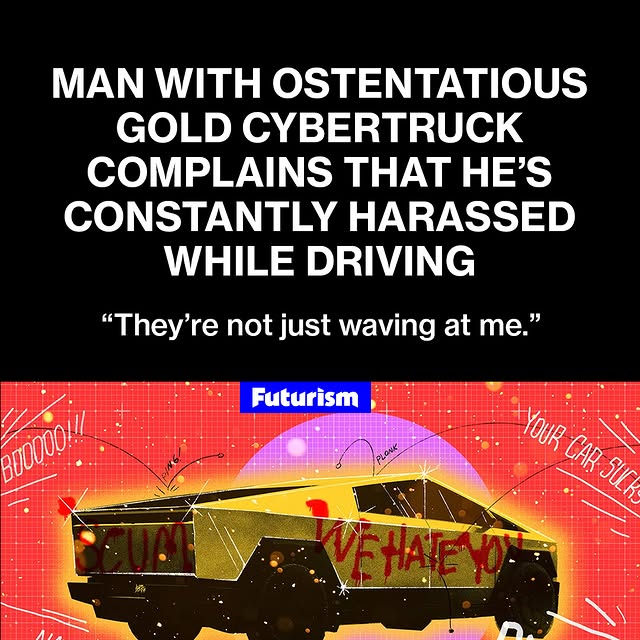
A man in Massachusetts claims he and his family are being harassed simply because he deigns to own a vehicle so glimmering and shiny you can see a clear reflection of the streets it graces with its ponderous presence. That would be a gold Cybertruck. "Since getting our Cybertruck, we've faced constant hostility," the owner, Kumait Jaroje, wrote on X-formerly-Twitter last week. "Someone even put a Nazi sticker on our truck." Of course, the controversial Tesla vehicle is an attention-grabber plenty enough on its own. With this paint job, it'll practically blind you with its sheer gaudiness. And politics aside, sharing the road with such a golden beacon of excess probably won't sit well with the many short-tempered drivers out there. Jaroje, who bought the truck to advertise his medical spa, added that he received threats after posting about the sticker online. He said in a television interview that he was "anxious and nervous about our safety and my kids' safety." "Now, they're not just waving at me, they're not just giving me the middle finger," he added. "Somebody tried to cut me off while I'm driving with my kids and three guys came out of the car and just pointed the middle finger and started screaming at me." See more of his comments at the link in our bio.

The official website for the Department of Government Efficiency, DOGE.gov, was thrown together in such haphazard fashion that it was literally an empty boilerplate. And when the site's webmasters got rid of the placeholder, they linked it to a site that literally anyone could edit. The issues came to light this week after DOGE head Elon Musk claimed in a White House press conference that a site for tracking "government waste" was brimming with his accomplishments. The web struggles are particularly noteworthy given Musk has employed a cadre of 20-something — and younger — engineers to run roughshod over the federal government, apparently without any thought into DOGE's own digital infrastructure. The most embarrassing part of the saga, in which random internet users could edit the site, came because DOGE.gov was pulling from a Cloudflare Pages site hosting the code that kept it running. And netizens took full advantage, writing in one blog post "this is a joke of a .gov site" and "THESE 'EXPERTS' LEFT THEIR DATABASE OPEN." The whole site "feels like it was completely slapped together," one source said. "Tons of errors and details leaked in the page source code." Eventually, DOGE.gov got back to something resembling what Musk had promised. It's a stream of tweets from an X feed. Read more at the link in our bio.

They say the universe works in mysterious ways. Well, just as everything feels like it's imploding on Earth, space has sent an asteroid the size of a large building to add to the chaos. A few weeks ago, scientists calculated that space rock 2024 YR4, had a 1.3 percent chance of hitting the Earth. That probability just rose substantially. There’s now a 2.1 percent chance of a “Don’t Look Up” scenario, or 1 in 48 odds, according to the Jet Propulsion Laboratory’s Center for Near Earth Object Studies (and, while the asteroid is big enough to cause catastrophic damage to a city, it’s not large enough to threaten the whole planet.) If it doesn’t impact the Earth, there’s a minuscule chance of 0.3 percent or so that it could hit the Moon instead. It’s unclear what our only natural satellite has done to piss off the space gods—other than simply being too close to our burning mess of a planet. Go to the link in our bio to learn more about the asteroid that might force us to put the plot of 'Armageddon' to the test.
Similar Influencers

Raising Haven

Kaori Lupine

Aina Reed

Antonia

꧁NISHA BANSAL꧂

ZEEVAAH | Fashion Robot

Eva Isabelle

Haneen Raslan | Tech-savvy 👾

ABA WILS | Virtual Influencer

Volo the Wolf

InsideKC

M Y R A ✨

Kate (Nellie-Kate)😍🇺🇸

Everly Mae

Sophie

Ella Infinity

Aimee Sorrel

Zara Davis

Nava

Katie

Hope Ava Thompson

Alexa Mariya petrova

𝔖𝔦𝔢𝔫𝔫𝔞 𝔐𝔬𝔬𝔫

Taylor Cox

Jezebel Stone

Daniela Zuccarini

Lilly Karlsson

Minerva Miller

Emilia
